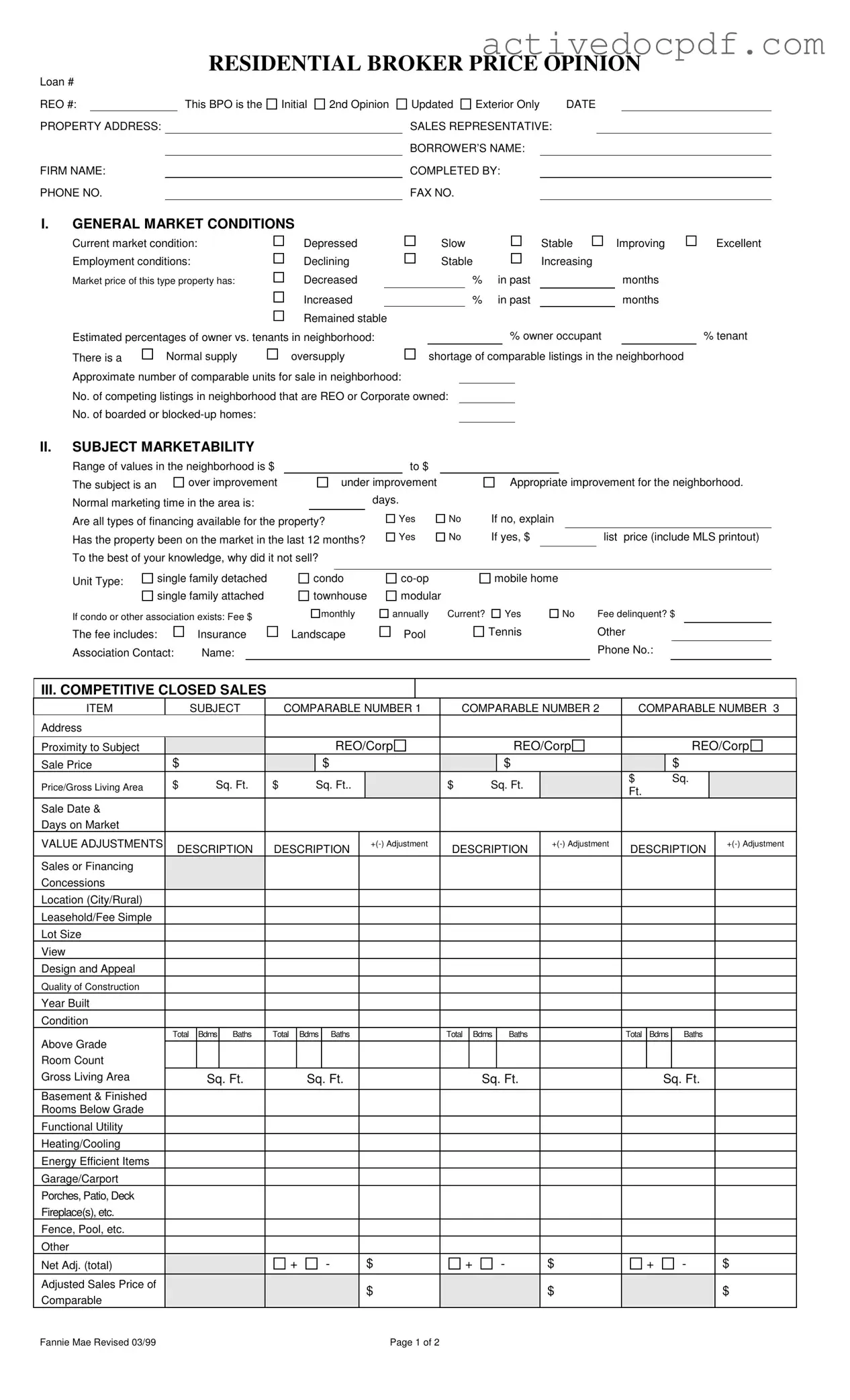What is a Broker Price Opinion (BPO)?
A Broker Price Opinion is a professional assessment of a property's value, typically conducted by a licensed real estate broker or agent. It provides an estimated market value based on various factors, including recent sales of comparable properties, current market conditions, and the property's condition. This opinion is often used by lenders and financial institutions to make informed decisions regarding real estate transactions.
When is a BPO typically needed?
A BPO may be needed in several situations, including:
-
When a property is being foreclosed and the lender needs to determine its value.
-
For refinancing purposes, where the lender requires an updated valuation.
-
During a short sale, to assess the property’s market value before proceeding.
-
When a property is listed for sale, to set an appropriate listing price.
A BPO typically includes:
-
General market conditions and employment statistics.
-
A detailed analysis of the subject property and its marketability.
-
Comparative sales data, including details about similar properties.
-
Recommendations for repairs or improvements to enhance marketability.
-
A suggested market value based on the analysis.
How is the value determined in a BPO?
The value in a BPO is determined by analyzing several factors, including:
-
Recent sales of comparable properties in the area.
-
The condition and features of the subject property.
-
Current market trends and economic conditions.
-
Any necessary repairs that may affect the property's value.
Who conducts a Broker Price Opinion?
A licensed real estate broker or agent typically conducts a BPO. These professionals have the expertise and knowledge of the local market to provide an accurate assessment. They utilize their experience and access to market data to evaluate the property effectively.
How long does it take to complete a BPO?
The time required to complete a BPO can vary, but it usually takes a few days to a week. Factors influencing this timeframe include the complexity of the property, the availability of comparable sales data, and the broker's workload. A thorough analysis ensures a more accurate valuation.
Can a BPO be used in place of an appraisal?
While a BPO provides valuable insights, it is not a substitute for a formal appraisal. An appraisal is a more comprehensive evaluation conducted by a licensed appraiser and is often required for certain transactions, such as mortgage financing. A BPO, however, can be a useful tool for quick assessments and preliminary valuations.
What should I do if I disagree with the BPO value?
If you disagree with the BPO value, consider discussing your concerns with the broker who conducted the opinion. Provide any additional information or data that may support your case. If necessary, you may also seek a formal appraisal for a more definitive valuation.
Are there any costs associated with obtaining a BPO?
Yes, there may be costs associated with obtaining a BPO. These fees can vary depending on the broker or real estate firm providing the service. It’s important to discuss any potential costs upfront to ensure you understand the financial implications before proceeding.
